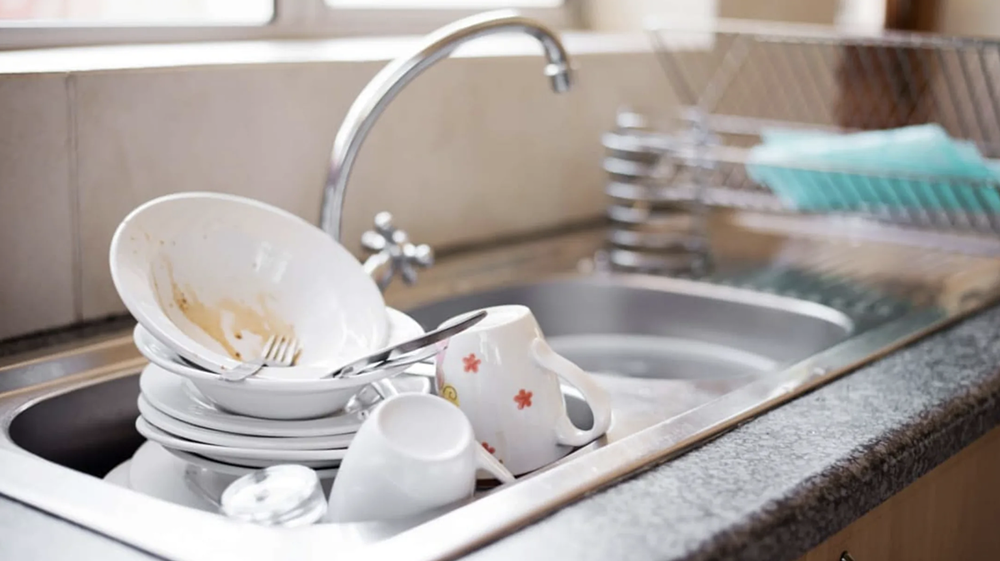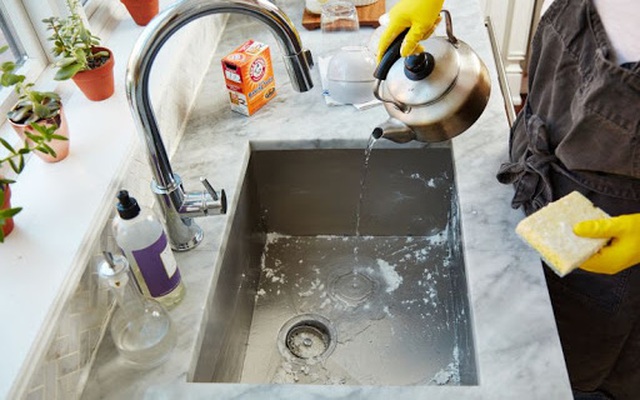In an article for the Daily Mail, scientist Michael Hanlon warned that hidden dangers lurk in every household’s kitchen.
The kitchen is the heart of the home, but according to Dr. Charles, a microbiologist and professor at the University of Arizona, it’s also a hotspot for household germs.
“The kitchen sink is a breeding ground for bacteria,” said Dr. Charles. “Think about it—you pour all sorts of things into it. You chop raw meat and then rinse the cutting board in the sink. You dump leftover food into it. You defrost frozen meats or wash raw chicken. That’s why there are more bacteria in the sink than in the toilet.”
In addition to food, sponges can also be a source of contamination for the sink. The doctor stated that there are up to ten million bacteria per square inch on a sponge, and about one million if it’s a cloth. In fact, sponges can be up to 200,000 times dirtier than a toilet seat. Using these sponges inadvertently increases the number of bacteria in the sink.
The sink may harbor bacteria that cause foodborne illnesses, the most common being Campylobacter jejuni, Salmonella, and Escherichia coli. E. coli, in particular, can lead to diarrhea, pneumonia, and is responsible for 80% of urinary tract infections.

Is it safe to wash vegetables and soak dishes in the sink?
Some families have the habit of soaking dishes in the sink, either due to busyness or the belief that pre-soaking makes it easier to remove stains. However, according to a report by the Australian Broadcasting Corporation, soaking dishes for too long can make them dirtier.
Leaving dishes to soak provides an ideal environment for bacteria to thrive, especially if they are soaked in warm or hot water. Typically, food-borne bacteria double every 20 minutes. Their growth rate increases after two hours, and they can multiply into trillions in a 24-hour period.
Similarly, soaking produce in the sink is a direct way to introduce harmful bacteria to your food and, subsequently, your body. This is especially true for raw fruits and vegetables. The risk of food poisoning is significantly increased if you maintain this unhealthy habit.
3 Suggestions to Clean Your Kitchen Sink
To ensure the safety of yourself and your family, consider implementing the following cleaning methods to reduce bacterial growth in your kitchen.
1. Hot Water
It’s possible for bacteria to remain in the sink even after scrubbing with soap or hot water. To effectively kill bacteria, we need water at 100 degrees Celsius, while the water from our taps isn’t hot enough. According to experts, you can boil water and pour it directly onto the sink’s stubborn stains.

Wait for about 2-3 minutes to let the stains loosen, then scrub with a brush or sponge using a small amount of dish soap. Finally, rinse thoroughly with cold water.
2. Lemon and Alum
Lemon and alum have long been known for their effective cleaning properties and are easily accessible. Simply mix lemon juice and alum in a 1:1 ratio, dip a sponge or cloth into the solution, and wipe down the entire sink surface. Rinse well with water afterward. For heavily soiled areas, apply the mixture directly and let it sit for 20-30 minutes before rinsing for better results.
3. Specialized Cleaning Products
To quickly and effectively clean your kitchen sink, consider using specialized cleaning products like dish soap or kitchen cleaning solutions. These products are designed to cut through grease and grime, ensuring a thorough clean.
The 5 Places to Keep Empty in Your Home: It’s Not Superstition, There’s a Reason
The kitchen is a pivotal space that should be kept clear and clutter-free. It is the heart of the home, where culinary creations come to life and memories are made. A tidy kitchen not only makes cooking and cleaning more efficient but also creates a calming and inviting atmosphere for both the chef and their guests.



































